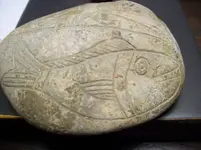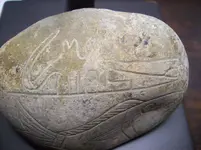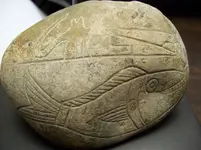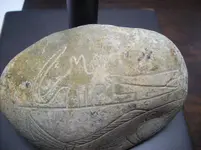Hi,
I'm just wondering if you've ever looked at this piece with a loupe. (Or even higher magnification, to determine its age. It will be obvious if it's new (less than several hundred, or even a thousand years old) if its surface isn't comprised mostly of "convexities" (tiny bumps, or "outies"). Newer items will be smooth, or filled with convex "divots". If you can determine that it's very old, I would simply hold on to it and keep asking questions. Everyone loves to tell you what something ISN'T, and yet being a collector of art, indian artifacts and antiques for 40 years I can tell you that nine times out of 10, they are wrong, simply out of innocent ignorance. Until someone sees it who knows what it is, having seen similar objects before, or until you do laboratory analysis (carbon dating of surface organic matter, for example), don't believe just anyone who tries to tell you what something isn't. Nobody has seen everything made by a particular group of "prehistoric" people (to use the word vaguely) from a particular area, or the particular time period that the items might have come from. It could be 30,000 years old until scrutiny can prove otherwise. For me, the most fun to come from finding treasures is doing the research, and trying to discover unknown items. Also worth remembering is that very few "early" art renderings are necessarily anatomically accurate. As with any art object, each artist was attempting to "materialize" something desireable, and to tell a story. More times than not, their depiction was somewhat "fantastic" on purpose. Best of luck with that item!












